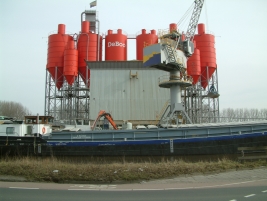Handling of powders and granular materials is of great importance to industry. In 80% of the industry these materials are involved. In the chemical industry alone, half of the products and at least three quarters of the raw materials are in the form of powders and granular solids. In any particulate process, the physical characteristics of powder and granular material e.g. cohesiveness, density, compressibility, particle size distribution, particle shape and humidity have an effect on the flowability and floodability of the bulk.
Also, solid particles and granules wear down during production, handling and transport. The forces particles undergo are broadly classified into impact forces, compressive forces and abrasive forces. Compressive forces tend to occur in hoppers, conveying systems, silos and on truck or rail where the particles are compressed by their own weight. Compressive forces can cause fragmentation of particles, a process whereby a particle splits into smaller parts, usually large in number and including a range of sizes of daughter particles this sometimes results in the releases of enclosed material. Abrasion causes dust and segregation has an impact on the quality of the powder material.
A wide range of different research methodologies is available for characterizing and and testing bulk powder behavior. Single pellet crushing strength for the radial and axial crushing of pellets and tablets, robotic compression tester technique for smaller particles and granules, shear testing according to Jenike, Peschl or Schulze, compact strength test after uniaxial compaction, powder characteristics using Hosokawa for flowability and floodability by Carr indices, attrition and abrasion resistance, and dustiness research by continuous drop and rotating drum methodologies according to Heubach and EN 15051.

- Powder Flow and Ring Shear Testing
- Unconfined powder flow testing
- Powder Caking by Uni-axial compact strength testing
- Powder stickiness measurement
- Heubach and EN 15051 dustiness analysis
- Attrition and abrasion of particles, granules and tablets
- Segregation testing of powders and solids
- EN 17199-4 Dustiness index and nano particles



